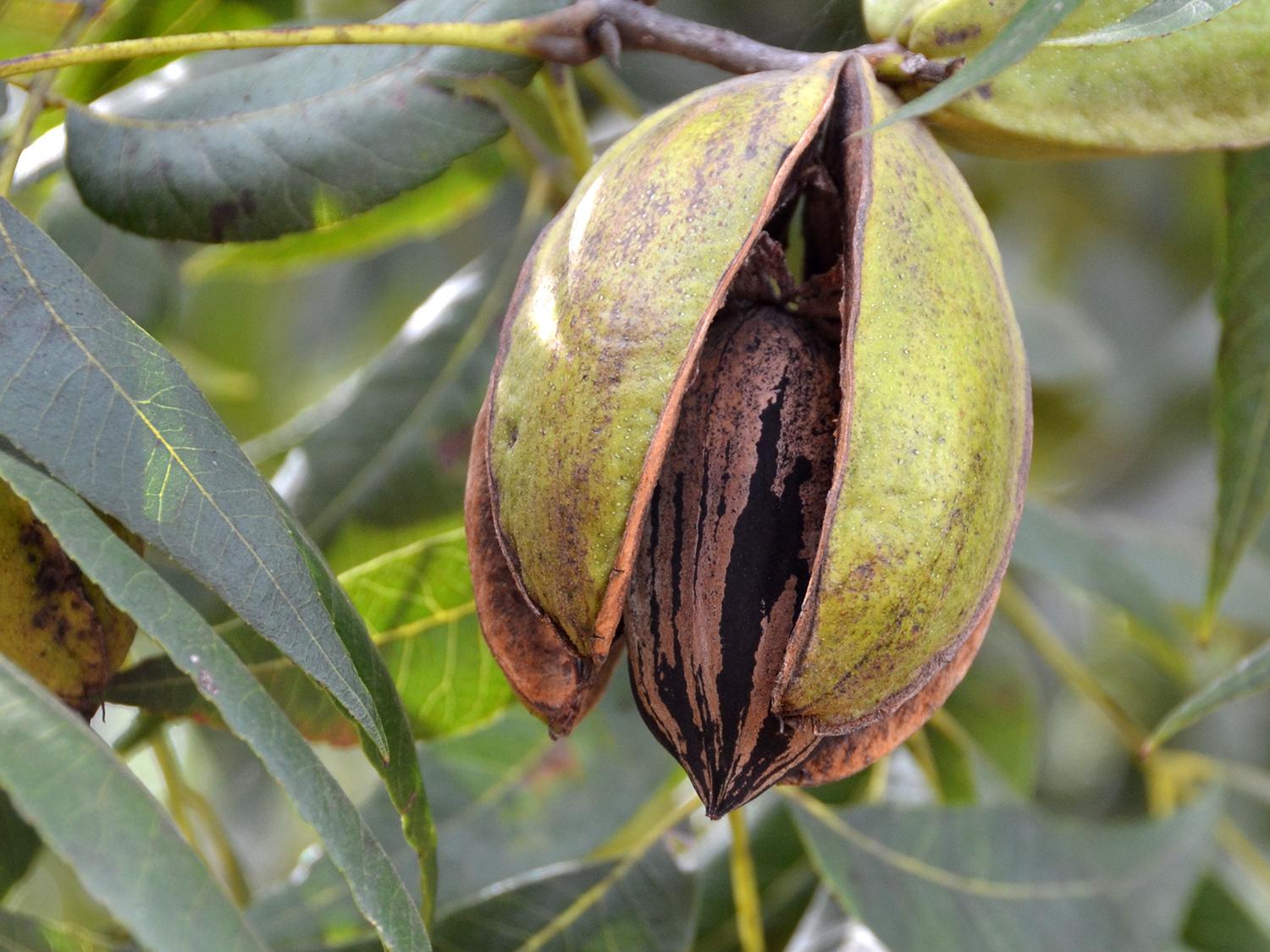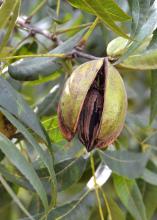Information Possibly Outdated
The information presented on this page was originally released on October 16, 2015. It may not be outdated, but please search our site for more current information. If you plan to quote or reference this information in a publication, please check with the Extension specialist or author before proceeding.
Average yield expected for 2015 pecan crop
RAYMOND, Miss. -- Despite a wet spring followed by a dry summer and fall, Mississippi should have average pecan yields in 2015.
The U.S. Department of Agriculture forecasts the state will produce 1.3 million pounds of pecans in 2015, which is up 30 percent from the 1 million pounds produced in 2014.
“A very rainy spring led to disease issues, but a dry summer was bad for nut filling,” said Eric Stafne, associate Extension and research professor with Mississippi State University. “Dry conditions on unirrigated orchards have led to some poorly filled, unmarketable nuts and significant leaf drop.”
Growers struggled to control pecan scab, which is worsened by wet weather.
“This disease is prevalent in unmanaged orchards, and the heavy rains in the spring led to great conditions for it to proliferate this year,” Stafne said.
Several insects can infest pecan orchards, including beetles, aphids and microscopic insects that cause pecan phylloxera.
“Phylloxera is prevalent every year, but by the time growers see it, the damage is done, and it is too late to do anything about it,” Stafne said. “Other insects, like stink bugs and pecan weevils, can be problematic in certain orchards.”
Aphids plagued central and south Mississippi growers who got very little rain in the fall.
“We had a lot of aphids this year,” said Max Draughn, owner of Pecan Hill Farms and Bass Pecan Company in Raymond. “Usually the rain helps wash some of them away, but this fall we’ve been so dry.”
Lane Varner, nursery manager at Pecan Hill Farms, said the farm also had a few types of beetles and some problems with phylloxera.
“We sprayed a few times for the insects we had, and everything was fine,” Varner said. “The phylloxera wasn’t widespread.”
Lack of rain has delayed harvest, said Draughn, who is also president of the Mississippi Pecan Growers Association.
“In the last few weeks of development, pecans need between a half inch and an inch of water for the nuts to fully mature and the green outer shell to open and release the nuts,” he said on Oct. 8. “If we’d had adequate rain this summer, we’d already be harvesting.”
Draughn irrigates some of his highly managed blocks of trees with pond water, but that source dried up a few weeks before the first round of harvest began during the second week of October.
Growers across the state will begin harvest later than usual, and yield will vary depending on the amount of rain their orchards received this summer.
“North Mississippi will have a good crop. Central Mississippi will have a so-so crop. And south Mississippi will have no crop,” Draughn said.
Early-season wholesale prices for good-quality, improved varieties of in-shell pecans are between $2.50 and $3 per pound. These pecans are selling at retail outlets for between $4.50 and $5.50.
Shelled mammoth pecan halves will wholesale for about $9 per pound and retail for about $13 per pound, Draughn said.
For more information about where to purchase Mississippi-grown pecans, visit the Mississippi Pecan Growers Association web site at http://www.mspecans.org.




